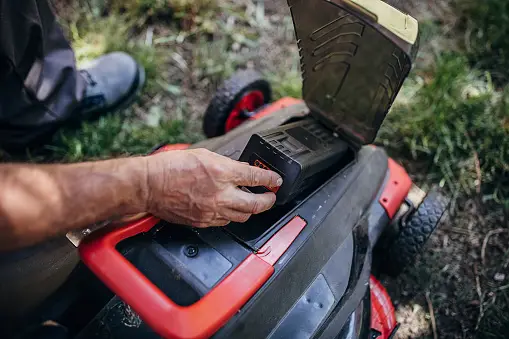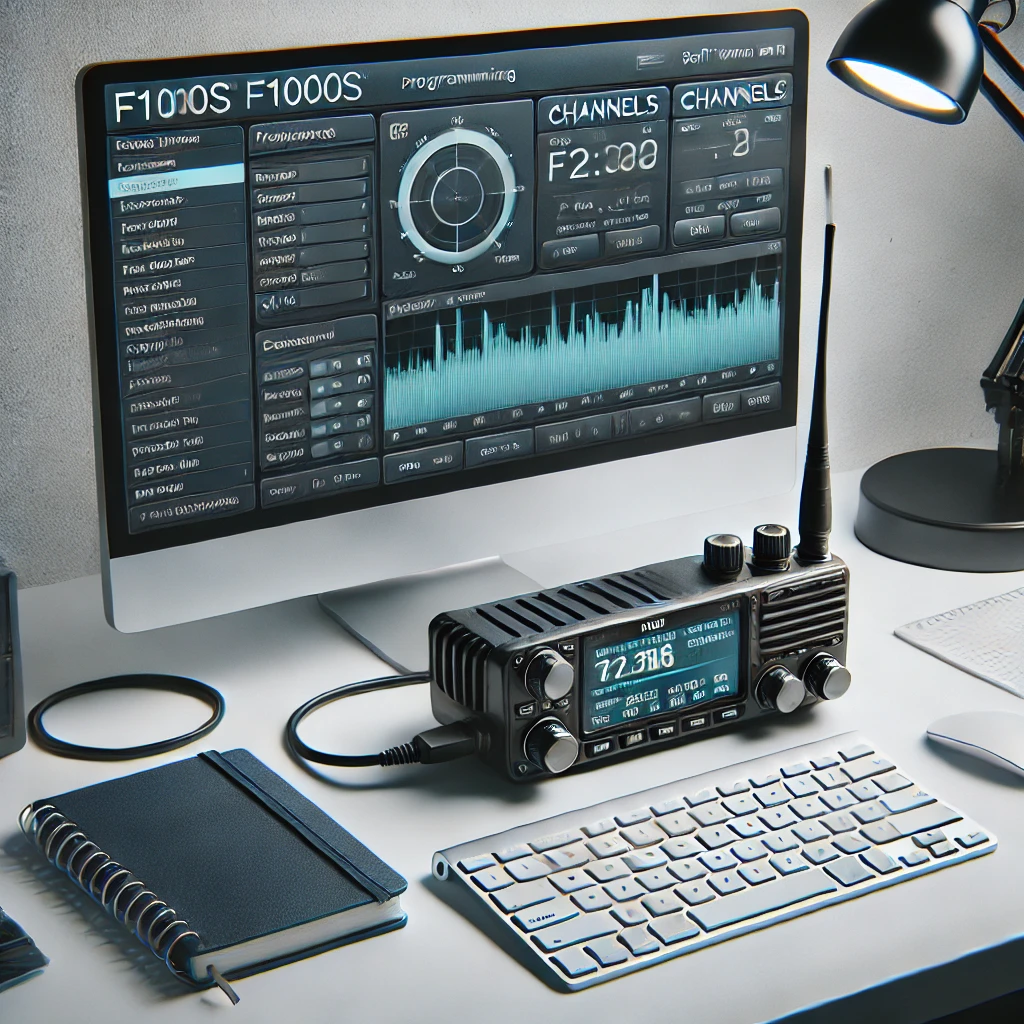Introduction
The Toro self-propelled lawn mowers are a popular choice for homeowners who need dependable and efficient solutions for their gardens. The Toro is a simple yet very effective lawnmower. Nonetheless, like any other mechanical thing, it can fail after some time.
The common issues with the self-propelled feature are slipping drive belts, transmission problems, or misplaced drive cables. It affects how smoothly and efficiently the mower operates. Our team will help you know why these problems manifest in your Toro mower if it begins to experience such issues.
Safety Precautions
Importance of Safety When Working with LawnMowers
Observing safety precautions while working on lawnmowers is important as this helps avoid accidents and injuries. For example, Toro’s self-propelled lawn mowers have powerful engines which have sharp blades that if not handled carefully may cause serious harm to anyone in proximity. During maintenance and repair activities, following safety rules ensures that there is a safe environment for everyone else near you including yourself. Ergo priority should be given to maintaining a safe workplace.
Necessary Safety Gear and Precautions
Safety Gear:
Protective Gloves: always put on protective gloves made of good material so that your hands are protected from sharp edges of blades or even hot engine parts.
Safety Glasses: Put on goggles to protect your eyes from debris,dust particles because they could scratch them.
Hearing Protection: Noise coming out of those machines could ruin your ears thus use ear plugs or headsets meant for protecting them.
Sturdy Footwear: Always wear closed shoes that provide good traction especially when working with gears on push behind mowers preventing tripping-offs.
Precautions:
Disconnect the Spark Plug: This step must always be observed before undertaking any repair works lest accidental start-ups occur.
Work on a Flat Surface: There needs to be an even ground surface where this machine can stand without toppling over when being used.
Keep Blades Sharp and Balanced: This ensures that grass is not plucked from the ground.
Check for Fuel Leaks: Before your maintenance, check whether fuel is leaking so as to avoid a fire outbreak.
Read the Manual: Mower’s manual is a good resource for safety precautions and other guidelines you should follow.
In this way; you will be able to maintain a safe work environment and carry out repairs on Toro self-propelled lawn mower with less fear of getting injured.
Initial Inspection Checking for obvious issues (loose parts, debris, etc.) Inspecting the drive belt and wheels
Initial Inspection
Checking for Obvious Issues
Before taking up complex repairs, it would be better if you start by carefully looking at your Toro self-propelled lawnmower. Specifically one may consider:
Loose Parts: Examine all nuts, bolts, and screws tightly fitting. Missing components can cause malfunctions or put lives in danger.
Debris and Obstructions: See if there are any grass leaves or anything else stuck in the mover’s parts. Remove every object that hinders smooth running of the machine.
Visible Damage: This includes cracks, warping, or broken portions on the casing among others like handles. To function well also these must be made whole again when damaged as this guarantees safe usage too.
Inspecting the Drive Belt and Wheels
To push wheels forward, they are connected by a drive belt which is an essential part of this system. Here’s how to inspect them:
Drive Belt:
To Access the Belt: Remove the deck cover exposing it thus; reference the user manual to follow instructions when necessary.
Checking for Wear and Tear: Have a look at the belt for frayed edges, cracks or stretches. A mower that does not work properly could have a damaged or worn out belt that slips or breaks.
Checking Tension: There should be no slackness on the belt. A loose one can fall off pulleys while an overtight one can lead wearing away of parts.
Wheels:
Examine Tread: Look for any signs of wear on wheels. Worn tire treads on mower wheels limit its ability to move powerfully along as well as reducing traction.
Align Wheels: Ensure that wheels are aligned correctly and do not wobble. The alignment of a machine’s wheel affects its effectiveness and ease of movement.
Look at Axle Condition: Damage/wear marks on axles and wheel mounts? Are they fitted securely and clear from debris?
Conducting a comprehensive initial inspection may help you identify some simple problems that hinder the performance of your Toro self-propelled lawn mower, before proceeding to more detailed troubleshooting if need be.
How to Get At And Inspect Drive Belt –Check Drive Belt

Preparation:
Disconnecting Spark Plug Lead(s): Before anything else, ensure you unplug spark plugs so as not to take chances with accidental start-ups.
Position the Mower Properly: Set it down where it will remain stationary after cooling off in the flat stable ground which won’t move during the shut-off period either.
Getting To The Drive Belt:
Remove Deck Cover: Find screws/bolts holding the deck cover which allows exposure of the drive belt. For specific details on how this cover was removed consult Toro mower’s manual guide.
Locate Drive Belt: Look inside crafting, after removing covers one should be able to spot a long rubbery object in one loop around those pulleys over there.
Inspection of the Drive Belt:
Visual Check – Are there any obvious damages like frayings/cracks/splits?
Tension Check – Confirm whether the belt is tightly held in place. In case it becomes loose, it will come out of the pulleys while if overtightened could cause wear on other parts.
Flexibility – Try to bend without breaking to see if there is any rigidity or brittleness as signs of old age and replacements needed in this case.
Indications Of Wear And Tear
Fraying: Edges are worn out and frayed.
Cracks: There exist visible cracks on top/ underneath the surface of the belt.
Stretching: Any free-running belt that doesn’t maintain the right tension.
Glazing: Shiny spots have been left by slips on its surface several times.
How To Replace A Damaged Drive Belt
Get Rid Of Old Belt:
Loosen tension by adjusting the tensioner pulley, or refer to your mower’s manual for advice on how one can disconnect belts when taking off the belt.
Slide the belt off the pulleys then remove it from the mower
Put On New Belt:
Position the new belt around the same path as the old one did onto the pulleys
Set up the intensifier pulley to have the correct amount of tension. Consult your manual for what these measurements should be precisely.
Reassemble Mower:
Put the back deck cover back in place and fasten using bolts/screws.
Connect the spark plug again and test that the mower runs okay with a new belt.
Transmission Inspection
Common Transmission Problems
Inspection of Leakages: Search for oil or fluid leakages around the transmission area. This may indicate a problem with gasketing or sealing.
Evaluation of Components: Look at the transmission components for any damage or wear out.
Tests for Transmission:
Raise Mower: Use either a mower lift or a jack to raise the mower wheels off the ground.
Push Self-Propelled Towards Wheel In: Engage it by pushing it in and without letting it touch down, watch how it rotates then.
Listen to Noises: Listen attentively during the operation to identify unusual noises. It can help identify internal transmission problems.
Solving Transmission Problems:
Drive Cable Adjustment: Sometimes transmission irregularities result from a misaligned drive cable or stretched one. Follow the manufacturer’s instructions in your manual on how to adjust cable tension accordingly.
Replace Transmission Fluids: Check and replace transmission fluids for applicable mowers. Low levels of fluid and /or dirty fluid may affect performance negatively.
Consult an Expert: If such are damaged as gears or housing of transmission it is better consulting an expert taking it to any service center where you purchased Ronsealers garden cleaner which will repair your lawn mower professionally
You can greatly improve Toro® Self-Propelled Lawn Mower performance and its durability by carefully inspecting, diagnosing, and repairing drive belt as well as occasional transmission problems.
Adjust Drive Cables – Symptoms of Loose Or Tight Drive Cable?
Loose Drive Cables:
The self-propel lever reacts sluggishly when engaged if not at all moving.
There is only periodic engagement of the drive mechanism
Excessive play exists within driver handle
Tight Drive Cables:
No more self propel engaging since forward movement occurs automatically upon slight push with hand force only .
So hard is engaging drive system resulting in this being stiffened without making sense at all.
Wires look elongated or frayed, if adjusted points pulled apart.
How to Change Your Drive Cable: A Step-By-Step Guide
What You’ll Need:
Disconnect the Spark Plug: First, disconnect the spark plug. Always.
Placing Mower: Put the mower on level ground so it can be easily adjusted.
Locating the Drive Cable:
In most cases, the drive cable runs from the handle’s driving lever down to the transmission right next to where the mower’s deck is located. Refer to your Toro® Mower owner’s manual for specific guidance relating to this particular matter.
Checking Current Tension:
As you squeeze it tightly and pull in a little bit, observe how slack it is. If there’s more than 1/4 inch distance when this lever has been actuated you may conclude that there’s too much free play
Adjusting Cable Setting:
Discovering Adjustment Areas: Look for screws used for adjusting driveshaft wires; they are usually positioned near either handle or running boards of lawnmowers respectively.
Unfasten Safety Bolt. Apply force with a spanner and at least place one finger on adjustment nut in order not to allow its rotation while loosening lock bolt
Set Wire Tautness: To increase or decrease tension use wrenches that are specifically designed for such purpose as stated above.
Tighten Lock Nut Again: Once you have tightened the cable to its desired level, lock it back in place with a pin.
Result of Testing:
Insert the spark plug and turn on your machine.
Release the self propel mechanism and check if it is operating smoothly without extra force exerted or applied through your hands
Fine-Tuning:
Make minor adjustments where necessary for optimum performance.
Cleaning Moving Parts
Why Keep Lubricated And Clean Moving Parts? What’s The Reason?
Maintaining the cleanliness and lubrication of different parts in your Toro self-propelled lawn mower is paramount for its good operation and durability. Dirt can bring about wear; therefore, proper lubrication minimizes friction increasing smoothness.
Properly Cleaning and Lubricating the Mower
Cleaning the Mower:
Unplug Spark Plug: Initially unplug spark plug always to avoid accidental starting up of machine .
Remove Debris: Take away grass clippings, dirt, or any other debris from the mower deck, wheels or other accessible surfaces using a brush or compressed air.
Clean Blades: Carefully brush off any matted clumps of grass or debris that have collected on blades. Be sure that blades are sharp and balanced.
Lubricating Moving Parts:
Choose Right Lubricant: Use quality lubes that are specifically designed for mowers as specified in your manual.
Lube Wheels & Axles: Apply lube on axle of wheel plus every moving part seen. Rotate wheels to distribute lube evenly over them.
Lube Drive Cable: At points where drive cable attaches to lever & transmission give it a little oiling especially when needed too much
Lube Transmission: If possible apply lube on transmission component as advised in manual.
Reassemble & Test:
Attach Back Parts: after cleaning up & greasing make sure all parts are securely fixed back .
Plug back Spark Plug: After ensuring everything has been put into place reconnect spark plug lead again, before you start mowing
Test Mower: Start your machine to see if it works well without problems such that all moving mechanisms function correctly together with smooth operation thereof
By cleaning and oiling your Toro self-propelled lawn mower on a regular basis, you can prevent common problems and maintain its efficiency through the mowing season.
Testing Fixes – How To Test The Lawnmover After Repair
Safety Check:
Reconnect The Spark Plug: Before starting the mower ensure that spark plug has been properly connected.
Clear The Area: To avoid accidents ensure there is no debris or obstacles in the testing area.
Initial Start-Up:
Start The Mower: Turn on lawnmover and let it idle for some few minutes as it gets warmed up.
Check for Unusual Noises: Take time to listen carefully for any other unfamiliar sound indicative of faulty repair work on your equipment
Engage Self-Propelled System:
Activate Drive Lever: Squeeze self-propel lever and watch how your mover moves have fun with this video about how to get a preowned car. Watch now! Watch yourself!!
Ensure a Smooth Operation: You will know that your lawnmower is in good condition if it moves forward without sudden stops or jerks.
Test Drive On Various Terrains:
Flat Surface: Ensure that when standing on flat surface, your mower moves straight ahead steadily at a constant pace.
Inclined Surface: Try pushing the machine up a slight incline to find out whether it can support an extra load without skidding off course
Thick Grass: Run over some slightly longer grass to check whether drive system can maintain consistency under more severe conditions like cutting thicker grasses.
Assessing Adjustments:
Drive Cable Tension: Ensure that drive cable adjustments allow for smooth engagement & disengagement of self-propel system.
Transmission Response: Check if there are no strange sounds produced whenever the transmission is in operation nor does it jerk during engagement.
Fine-Tuning:
Make Necessary Adjustments: If there are any problems identified during testing, adjust the drive cable, belt tension, or transmission as required.
Retest After Adjustments: Always recheck everything after adjustments to make sure all systems function well.
Conclusion
Maintaining and repairing Toro self-propelled lawn mower involves more than you think. Begin with a detailed initial inspection such as removing loose parts and debris. Examine the Drive Belt and Wheels looking if the drive belt is worn out needing replacement. Thus, to fix common transmission issues diagnose leaks, noise and ensure right fluid levels. Tension may be adjusted for optimal performance on drive cable. At the time of these repairs try to lubricate all movable parts regularly to reduce wear-and-tear as well as test whether this was done on schedule.











Leave a Reply